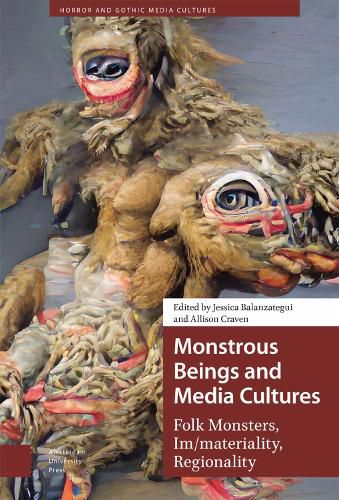Readings Newsletter
Become a Readings Member to make your shopping experience even easier.
Sign in or sign up for free!
You’re not far away from qualifying for FREE standard shipping within Australia
You’ve qualified for FREE standard shipping within Australia
The cart is loading…






Monstrous Beings and Media Cultures examines the monsters and sinister creatures that spawn from folk horror, Gothic fiction, and from various sectors of media cultures. The collection illuminates how folk monsters form across different art and media traditions, and interrogates the 21C revitalization of "folk" as both a cultural formation and aesthetic mode. The essays explore how combinations of vernacular and institutional creative processes shape the folkloric and/or folkoresque attributes of monstrous beings, their popularity, and the contexts in which they are received.
While it focuses on 21C permutations of folk monstrosity, the collection is transhistorical in approach, featuring chapters that focus on contemporary folk monsters, historical antecedents, and the pre-C21st art and media traditions that shaped enduring monstrous beings. The collection also illuminates how folk monsters and folk "horror" travel across cultures, media, and time periods, and how iconic monsters are tethered to yet repeatedly become unanchored from material and regional contexts.
$9.00 standard shipping within Australia
FREE standard shipping within Australia for orders over $100.00
Express & International shipping calculated at checkout
Monstrous Beings and Media Cultures examines the monsters and sinister creatures that spawn from folk horror, Gothic fiction, and from various sectors of media cultures. The collection illuminates how folk monsters form across different art and media traditions, and interrogates the 21C revitalization of "folk" as both a cultural formation and aesthetic mode. The essays explore how combinations of vernacular and institutional creative processes shape the folkloric and/or folkoresque attributes of monstrous beings, their popularity, and the contexts in which they are received.
While it focuses on 21C permutations of folk monstrosity, the collection is transhistorical in approach, featuring chapters that focus on contemporary folk monsters, historical antecedents, and the pre-C21st art and media traditions that shaped enduring monstrous beings. The collection also illuminates how folk monsters and folk "horror" travel across cultures, media, and time periods, and how iconic monsters are tethered to yet repeatedly become unanchored from material and regional contexts.